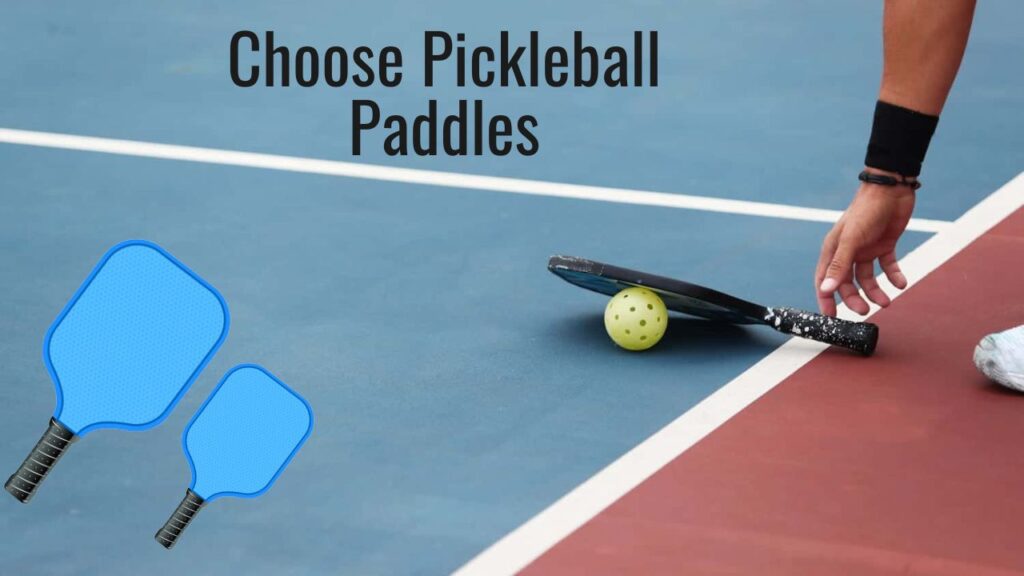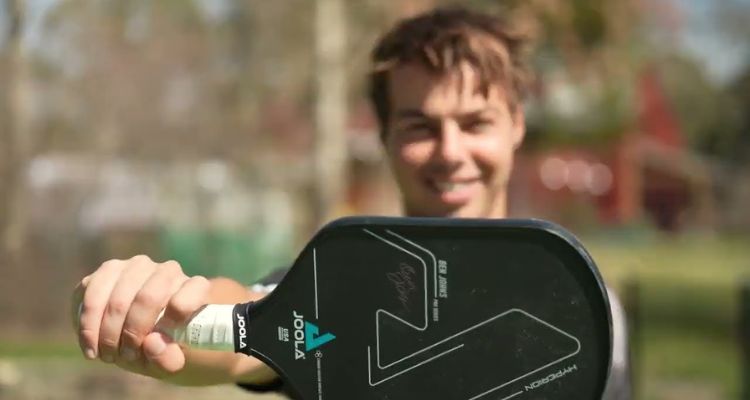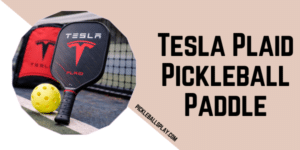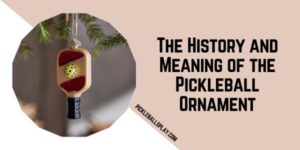Choosing the right paddle is the single fastest way to improve your on-court performance. This guide focuses on how to choose pickleball paddles using the latest materials, tech, and testing tactics available in 2025 — no basic rules, just actionable decision-making so you can pick the paddle that actually fits your game.
Below you’ll find: what matters most (weight, core, face, grip, and shape), a comparison table of paddle types, step-by-step testing and buying advice, and a short checklist you can use at the court or store when you try gear.
If you want to improve your game, knowing how to choose pickleball paddles is the first step toward playing with power and precision
Factors to Consider When You Choose Pickleball Paddles
When players ask how to choose pickleball paddles, five attributes determine whether a paddle feels “right” and helps your game:
- Weight (static and swing feel) — controls power vs. maneuverability.
- Core material and thickness — defines pop, control, and vibration.
- Face material and texture — affects spin, touch, and durability.
- Grip size and handle length — impacts comfort, wrist action, and injury risk.
- Shape (standard, elongated, wide-body) and balance point — changes sweet spot and reach.
These five guideposts should be the backbone of any decision about how to choose pickleball paddles. Ignore marketing buzz and judge paddles by these metrics first.
Quick comparison table — pick by play style
Top factors to consider when you choose pickleball paddles:
| Playstyle | Weight range (oz) | Core type (typical) | Face material | Why choose this |
|---|---|---|---|---|
| Control / Dink-first | 7.8–8.4 | Polymer core (thicker) | Graphite / carbon fiber | Soft feel, predictable placement, less shock. |
| All-court / Balanced | 8.2–8.8 | Polymer core (mid-thickness) | Graphite or fiberglass | Versatile — blend of touch and pop. |
| Power / Aggressive | 8.6–9.6+ | Nomex or thin polymer | Fiberglass or textured carbon | More pop and speed, but less forgiveness. |
| Spin specialist | 7.8–8.6 | Polymer core | Raw-textured carbon or fiberglass | Textured faces increase spin potential. |
| Beginner / Value | 8.0–9.0 | Polymer or basic composite | Fiberglass / carbon blend | Durable, forgiving, more affordable. |
Use this table as a starting filter: first select your playstyle, then dial into weight, core, and face options.

Deep dive: paddle cores — what to know right now
Core choice is one of the biggest performance levers when you choose pickleball paddles.
- Polymer (polypropylene honeycomb): the most common modern core. Thicker polymer cores generally give more control and dampening; thinner polymer cores offer more pop. Polymer cores are quieter, durable, and very forgiving — the default recommendation for most players.
- Nomex (paper honeycomb with resin): stiffer and more powerful, used in high-pop paddles. Nomex can feel loud and unforgiving at the kitchen line; best for aggressive players who want immediate power.
- Aluminum / SST / other cores: rarer but used in specialty paddles; aluminum can be light with crisp response but may transmit more vibration. New SST (solid-state tech) variants show up from boutique brands — test before buying.
Practical tip: if you value consistent dinks and want to reduce shock, favor thicker polymer cores. If you need extra pop for put-aways, try a thinner polymer or Nomex core — but test for control in soft exchanges.
Face materials and texture: spin, durability, and feel
Face material interacts with core to define spin, control, and forgiveness.
- Graphite / carbon fiber faces deliver a crisp, controlled feel and excellent touch — common on control and all-court paddles. Graphite plus thicker core = high control.
- Fiberglass faces produce a livelier, more powerful response and tend to boost the ball off the paddle. Good for players seeking power without switching to Nomex cores.
- Raw or “peel-ply” textured faces are now mainstream for spin-focused paddles. The textured resin increases friction to help generate spin but can also increase the chance of mis-hits for novices.
If you’re comparing two paddles with similar cores, the face material will define whether they play “soft” or “snappy.” When you choose pickleball paddles, decide whether spin or pure control is more important for your shot selection. When you choose pickleball paddles, grip size and weight should be your top considerations.
Weight: static weight vs. swing weight vs. balance
Manufacturers list static weight (on the scale), but swing weight (how heavy it feels when moving) is equally important.
- Lighter paddles (≈7.8–8.2 oz) are more maneuverable and let you react quicker at the kitchen. Ideal for control players and quick volley exchanges.
- Heavier paddles (≈8.6–9.6 oz) provide momentum and raw power, helpful for baseline drives and put-aways; heavier paddles can fatigue the arm faster.
- Balance point matters: a head-heavy paddle increases plow-through (power) while a handle-heavy paddle increases maneuverability.
How to choose pickleball paddles by weight: start with a weight you can comfortably swing for extended play. Try a 10–15 minute drill with any demo paddle to feel both static and swing weight before deciding.
Grip size and handle length — comfort, spin, and injury prevention
Grip diameter and handle length influence wrist action and two-handed backhands.
- Grip sizes: common ranges are about 4.0–4.5 inches. Smaller grips increase wrist rotation (helpful for spin); larger grips improve stability and reduce wrist strain.
- Handle length: elongated handles let you use a two-handed backhand but reduce maneuverability; standard handles give the best all-around control.
- If unsure, measure your index finger to palm distance — many retailers and guides provide simple sizing charts. Replaceable grips let you tweak thickness after purchase.
When you choose pickleball paddles, don’t underestimate comfort: a poorly sized grip increases the risk of tennis elbow and reduces accuracy over long sessions.
Shape and sweet spot: standard, wide, and elongated
Paddle shape changes reach and sweet-spot size.
- Standard shape (balanced sweet spot) is best for most players: predictable contact and easy control.
- Wide-body paddles increase sweet-spot area for more forgiveness and better returns on mis-hits. Great for beginners and control players.
- Elongated paddles increase reach and power at the expense of sweet-spot forgiveness — popular among aggressive singles players and those who prefer extra length for groundstrokes.
Try all three shapes if possible; your preferred court position (net player vs. baseline) will often dictate the ideal shape.
Latest trends to watch in 2025
- Raw-textured carbon faces for spin are now standard in many new releases (makes spin easier for intermediate players).
- Edgeless or minimal edge-guard designs for improved sweet-spot area — these need testing for durability but feel great for control players.
- Lightweight composites and SST core experiments from boutique brands promise lower swing weight without sacrificing pop — test a demo before buying.
These trends mean more specialized paddles are available than ever — so the onus is on you to match tech to playstyle when you choose pickleball paddles.
How to test paddles properly — a practical 6-step court routine
- Warm up with your usual strokes for 3–5 minutes so you’re not testing cold.
- Dink for 5 minutes with the demo paddle — assess touch and feel on soft shots.
- Do a volley drill (3–5 minutes) to judge maneuverability at the kitchen.
- Execute 10–15 third-shot drops/drives to test power and control transition.
- Practice top-spin lobs or drives to assess face-texture and spin potential.
- Check comfort: grip feel, wrist feedback, and fatigue after 10–15 minutes.
Bring a notebook or use your phone to record impressions — weight, sweet spot, and whether it improved or hindered your best shot. If you can, test paddles in consecutive order from lightest to heaviest to feel differences more clearly.
Price, warranty, and durability
- Expect to pay $100–$350 for modern composite paddles; flagship pro models can exceed $300.
- Warranty: higher-quality paddles usually include 1–2 year manufacturing warranties; edge-guard and surface durability vary—ask the retailer.
- Durability: carbon fiber faces are long-lasting but can develop surface micro-scratches; replace grips often and store paddles away from extreme heat.
Buying strategy: for frequent players, spending a bit more on a well-reviewed, durable paddle often pays off in performance and lifespan.

Quick recommended next steps
- Visit a reputable retailer (Pickleball Central, Pickleheads, PB5star) and ask for demos of paddles in your preferred weight and core family.
- If buying online, compare specs: listed static weight, core type, face material, grip diameter, and return policy — then narrow to two choices and cross-check reviews.
- Re-test after a week of play; sometimes a paddle grows on you and switching back is the best test.
References & further reading
- Pickleball Central — Paddle Guide (weight, texture, spin, demo tips).
- JustPaddles — Core material deep dive (polymer vs. Nomex).
- Pickleheads — 2025 top paddle recommendations.
- Paddletek blog — materials overview and lightweight options.
- PB5star and PickleballEffect — trend and new release coverage for 2025.
With the right knowledge, it becomes much easier to choose pickleball paddles that match your style and help you win more games.
FAQs:
How heavy should a pickleball paddle be?
The ideal weight is between 7.5 and 8.5 ounces, based on personal preference and playing style.
What is the correct grip size for a pickleball paddle?
Choose a grip size that fits comfortably in your hand.
What is the difference between a graphite paddle and a composite paddle?
Graphite paddles are lightweight with excellent control, while composite paddles are heavier, offering more power.
Do I need an edge guard on my paddle?
Recommended for players prone to hitting the paddle on the ground or walls, an edge guard protects the paddle and extends its lifespan.
How long do pickleball paddles last?
Lifespan varies, but a well-maintained, high-quality paddle can last several years.




